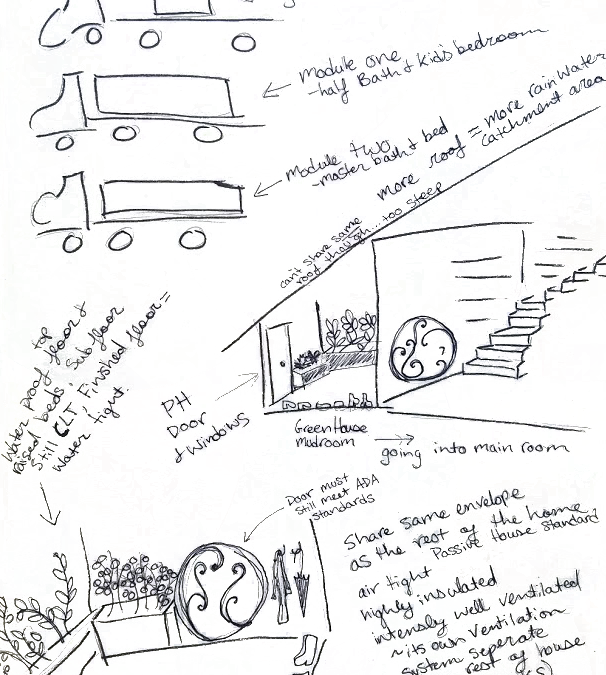
by William | Jul 21, 2021 | Net Zero
Dear Readers,
You see that crazy scribble scrabble in that image down below?
This blog is essentially just a more neatly transcribed version of those notes. If you feel an inclination to be totally absorbed by a whirlwind brainstorm of how to handle our “too-much-mulch-basin-filtered-greywater conundrum,” then this blog is for you. I will try to make it brief. Besides putting out our ideas to the world-wide web, we more so are looking for feedback and suggestions from you! Any thoughts are more than welcome.
So, without further ado…
This is our problem…
Some of you may already be familiar with this one of many issues with The Seed. To briefly sum it up, our mulch basin will end up filtering more greywater on a daily basis (about 30 gallons) than the indoor green wall needs in a week (about 20 gallons). You can read more about the conundrum in its entirety here.
The ideas that resulted from a morning wading through vexing greywater are as follows:
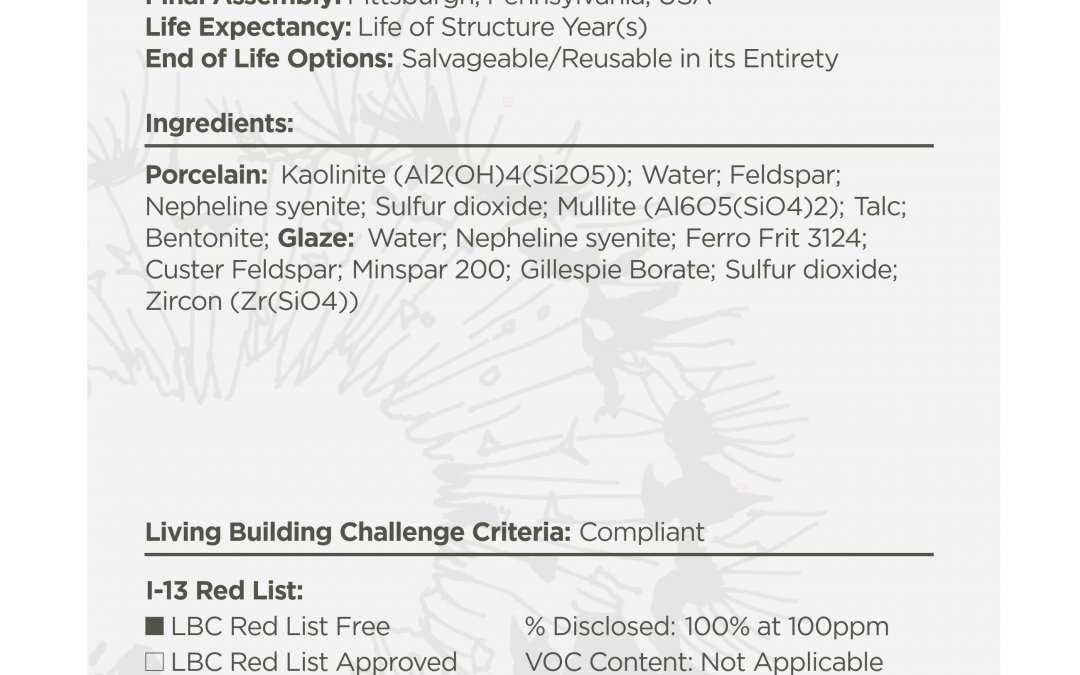
by William | Jul 14, 2021 | Healthy Living
Dear Readers,
This is just a quick blog on some exciting additions to the Living Building Challenge’s list of products with Declare labels. A “Declare label” put simply is essentially a ‘nutrition label’ that details what exactly goes into the making of a product, where it is made, and what to do with it at the end of its useful life.
Originally, when William and I first officially decided to pursue full Living Building Challenge certification, their Declare page didn’t have too much going on. Mostly office chairs and carpet tiles, really.
But now….there are products with Declare labels that we could actually use listed in their database! And not only could we use them, you probably could too! Which is so, so wonderful. If you would like to look at the current database on your own, you can go here: Declare – International Living Future Institute (living-future.org)
I, however, am only going to briefly mention to you a few of the particular products we find both exciting and applicable to our home’s design.
The first few I’ll mention are Owens Corning’s Foamglas Insulation and Verduren’s liquid linoleum floor. We are considering using these products for our foundation systems for our mulch basin and composting toilet tank enclosures. Both the Verduren flooring and the foamglas insulation are Red List free and have the potential to be recycled. The Verduren flooring is more recyclable than the insulation admittedly. But still. It’s cool. Just the fact that some manufacturers are willing to be open about what exactly goes into their products and where they are made is a step forward in a wide-spread recognition of both our footprints and handprints. Of course, additional independent research is always encouraged.
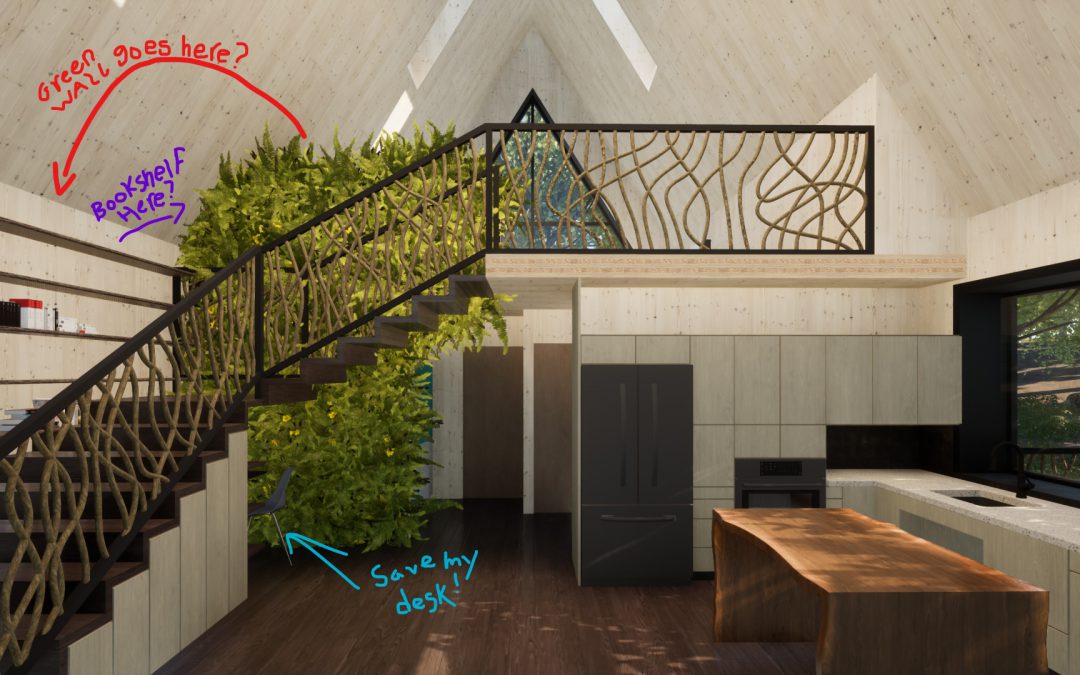
by William | Jun 30, 2021 | Net Zero
Dear Readers,
We have a slight conundrum. Nothin’ new…just thought I’d start working it out through writing, while simultaneously perhaps picking your brains for ideas 🙂
William and I have been working diligently to not only find ways to cut our overall water consumption so that we can comfortably rely solely on rainwater collection for all our potable and non-potable needs, but we have also been attempting to treat all of our wastewater on-site while still meeting PA DEP codes. If you have read “The Water Cycle of the Seed III?” then you are familiar with our aim to keep all of the treatment of the water within our home’s envelope in order to achieve our end goals and comply with said code.
Whelp, the PA DEP took the time to look at our home’s nifty water cycle diagram, and they were pretty unofficially ok with it! We will have to pursue an experimental permit, and verify a couple of things with our local code officials…but…overall, it was at the least a ‘green light’ to continue chuggin’ along with our current plan and see what becomes of it. Which is super exciting!!
However, that does lead to this latest conundrum: Given the ‘go ahead,’ we took a closer look at our mulch basin. We quickly realized that our mulch basin is going to receive a disproportionately large amount of greywater in need of treatment each day, in comparison to the amount of water that our prospective indoor green wall is actually going to need.
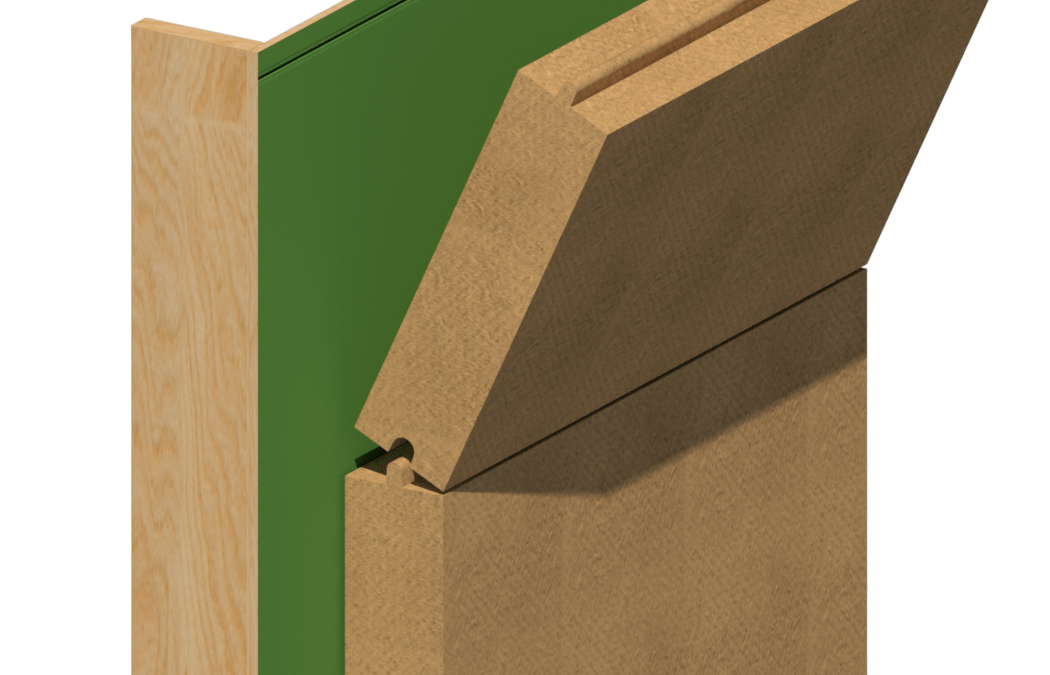
by William | Jun 23, 2021 | Passive House
Dear Readers,
As many of you are already well aware, William and I are hopeful people. Admittedly, William more than I. I can be a bit of a negative nancy at times.
All optimism and pessimism aside, I like to think we can be quite grounded in our hope. One of the handful of products we are hoping on, and crossing our fingers that it may indeed be on the market by the time we actually build our house, is wood fiber insulation by Go Lab.
Expected to be on the market in 2022, Go Lab is bringing wood fiber insulation to the United States~ Maine, to be specific! They will offer wood fiber batt insulation, dense pack and loose fill wood fiber insulation, and continuous wood fiber board insulation. Which is great! Howeverrrrr…we really only want the continuous board wood fiber insulation.
When looking at William’s beautiful wall section…
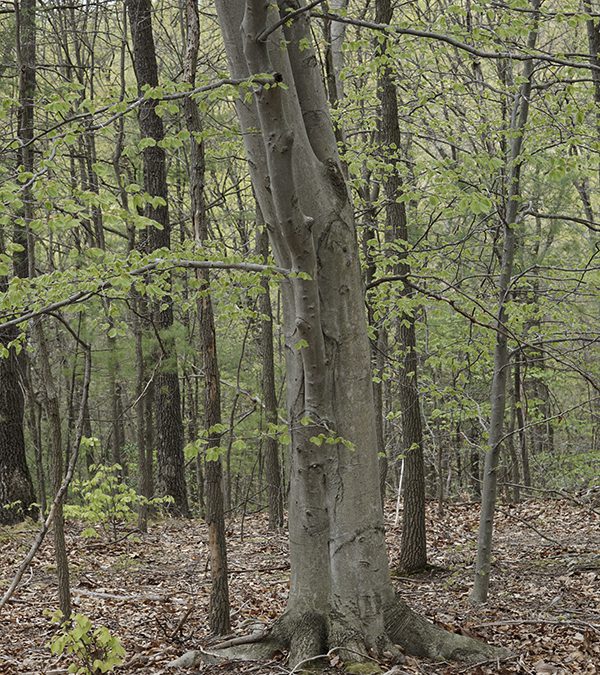
by William | Jun 9, 2021 | Small Footprint
Dear Readers,
All of my previous tree identifying attempts were a total failure. I do apologize to my 9th grade biology teacher who attempted to grace us with his knowledge of all things Pennsylvanian trees…I have failed you.
Luckily for William and I, we had a friend of a friend of ours…who is now…and actually already was…our friend too, come out to our property to help truly identify the trees on our land. As a previous Pennsylvania State Forester, he knew what he was talking about. And he was incredibly helpful in allowing William and I to become more acquainted with our future home.
To summarize, these are the most prevalent tree species on our wee bit of 2.9 something acres of land:
Chestnut Oak~ that white oak I thought was a white oak, but then thought was a red oak…but really it’s a white oak…
Witch Hazel~ more of a shrub, really…but with tons of ancient medicinal benefits!
Sassafras~ the ones with the cool variety of leaves and lots of sass! Most of the ones we found were lil’ saplings though…they don’t seem to get enough sun to grow big and strong. An indicator for our sun exposure for our house? Hmmm…you sure can learn a lot from trees…especially the sassy ones.





